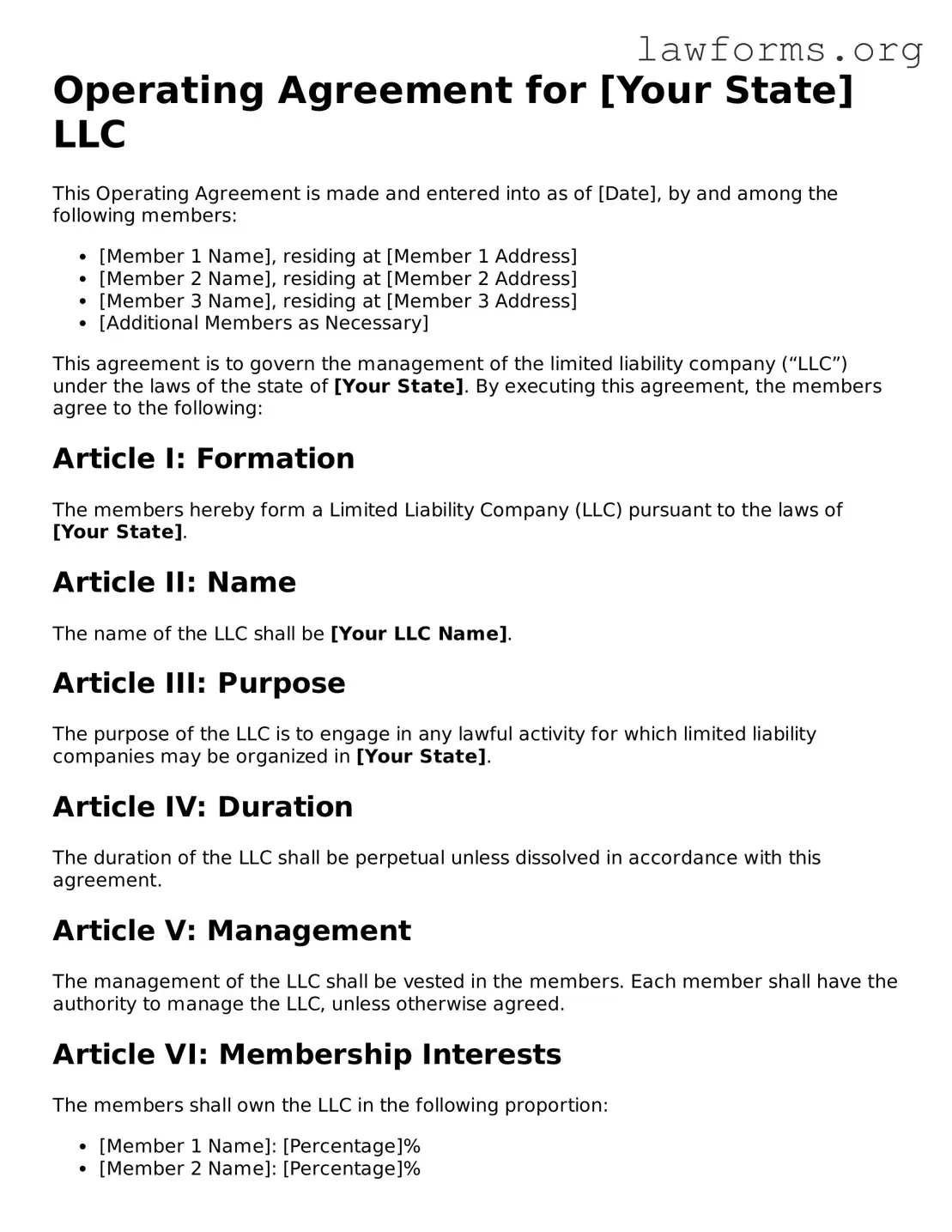Operating Agreement for [Your State] LLC
This Operating Agreement is made and entered into as of [Date], by and among the following members:
- [Member 1 Name], residing at [Member 1 Address]
- [Member 2 Name], residing at [Member 2 Address]
- [Member 3 Name], residing at [Member 3 Address]
- [Additional Members as Necessary]
This agreement is to govern the management of the limited liability company (“LLC”) under the laws of the state of [Your State]. By executing this agreement, the members agree to the following:
Article I: Formation
The members hereby form a Limited Liability Company (LLC) pursuant to the laws of [Your State].
Article II: Name
The name of the LLC shall be [Your LLC Name].
Article III: Purpose
The purpose of the LLC is to engage in any lawful activity for which limited liability companies may be organized in [Your State].
Article IV: Duration
The duration of the LLC shall be perpetual unless dissolved in accordance with this agreement.
Article V: Management
The management of the LLC shall be vested in the members. Each member shall have the authority to manage the LLC, unless otherwise agreed.
Article VI: Membership Interests
The members shall own the LLC in the following proportion:
- [Member 1 Name]: [Percentage]%
- [Member 2 Name]: [Percentage]%
- [Member 3 Name]: [Percentage]%
- [Additional Members as Necessary]
Article VII: Distributions
Distributions shall be made to the members in proportion to their membership interests unless otherwise agreed upon.
Article VIII: Meetings
Regular meetings shall be held at least once annually, at a time and place determined by the members.
Article IX: Amendments
This Operating Agreement may be amended only by a written agreement signed by all members.
Article X: Dissolution
The LLC may be dissolved upon agreement of all members, or as required by law. Upon dissolution, assets shall be distributed in accordance with membership interests.
This Operating Agreement has been executed as of the date first above written.
Signature of Members:
- ____________________________ - [Member 1 Name]
- ____________________________ - [Member 2 Name]
- ____________________________ - [Member 3 Name]
- ____________________________ - [Additional Members as Necessary]
